Quang Binh On sunny days at its peak, Quang Phu salt farmers smile brightly because of a good salt harvest and good prices...
Quang Binh On sunny days at its peak, Quang Phu salt farmers smile brightly because of a good salt harvest and good prices...
We sat in a shack next to the salt field in the hot sun. The occasional breeze blowing through the salt field did not make the sweat on our faces freeze. When the clock pointed to 2 pm, Mr. Vo Huynh (Phu Loc 3 village, Quang Phu commune, Quang Trach district, Quang Binh), put on his hat and hurriedly walked out to the salt field.
He squatted down, pressed his finger hard on the crystallized white salt layer on the field and said: “The salt has reached high quality. On sunny days, when the temperature is over 40 degrees outside, the salt crystallizes very quickly. People harvest early and take advantage of the opportunity to put the salt water in the pot to dry. Tomorrow, when the sun comes out early, there will be another batch of beautiful salt to harvest early,” Mr. Huynh said happily.

Salt fields in Quang Phu commune. Photo: T. Phung.
The hotter the sun, the whiter the salt.
In the past, there were three villages in Quang Binh that made sea salt. But now, only Quang Phu salt village remains. Mr. Vo Huynh said that his family has made salt for three generations. “This job is very strange. Normally, people feel worried when they see the scorching sun on their skin, but only we are happy. Every year, there are only a few summer months when we can make salt, so we work day and night to produce and earn income,” Mr. Huynh confided.
In recent salt harvests, salt farmers in Quang Phu commune seem to have new joy as salt productivity is higher and prices are gradually increasing. Currently, the whole commune has about 200 households working in the salt industry on a salt field area of over 78 hectares.
For many generations, the people of Quang Phu salt village have only kept the traditional method, which is to take seawater from the high tide and lead it into the salt fields and dry it in the summer sun to crystallize without any other “additives”. Mr. Huynh further explained that this means that the seawater is brought up by the tide to the Loan River and then led into the main canal running through the fields. Each salt-making family has two adjacent areas. That is the field where the seawater is dried (called giang nang) and the area where the seawater is dried after being dried in the sun and crystallized into salt grains (called o chap).
Seawater from the canal is pumped or flows into the rice fields and dried in the sun for about 5 days before being collected in the tank. “From the tank, people use a 'mo' to scoop seawater and sprinkle it on the o chau and continue to dry it in a sunny day, then the salt crystallizes into the product. On very sunny days, the water rises to the o chau in less than a day and is ready for harvest. On days when the sun is blazing, the salt becomes even more beautiful, crystallizing into large grains, as white as snow. Those are the times when the harvest is good,” Mr. Huynh added.

Mr. Vo Huynh: "The stronger the sun, the better the harvest. Salt only needs to be dried for one day to be harvested." Photo: T. Phung.
Salt production follows the sunny season. Usually, after Tet, salt villagers will go to the fields to repair and build new banks on the sunny part of the fields. The part of the fields that has been invested in as a cement yard is cleaned… to prepare for the sunny season.
Around April is the beginning of the season and ends in August. Some years, when the summer is longer, the salt season is extended by a few weeks. But the beginning of September is the end, because then there are often showers. “If the salt is dried in the beautiful sunshine and then encounters a shower, it is considered a waste. Because at that time, the salt is not white and the crystallization time is also longer,” Mr. Huynh explained further.
When the hot weather lasts for a long time, it is a favorable condition for salt farmers to stick to their fields to produce. On average, 1 hectare of salt field (including both sunny and dry fields) yields about one ton of salt grains per day. Mr. Huynh said: "During the good salt season, with a high purchase price at the field of 2 million VND/ton of salt grains, farmers earn 2 million VND. There are 2 people working to make salt, so each worker earns 1 million VND/day."
The family of Ms. Vo Thi Thanh (in Phu Loc 2 village) is also classified as a household with a fairly large salt field area in the village. She said that her grandparents used to be salt workers. After the ups and downs of the profession, it gradually faded away, the salt fields were abandoned, and salt workers left to work for hire in other places. In the past ten years, the salt profession has gradually revived. The number of salt workers has gradually increased and their income has also increased a bit, saving up to build a house.
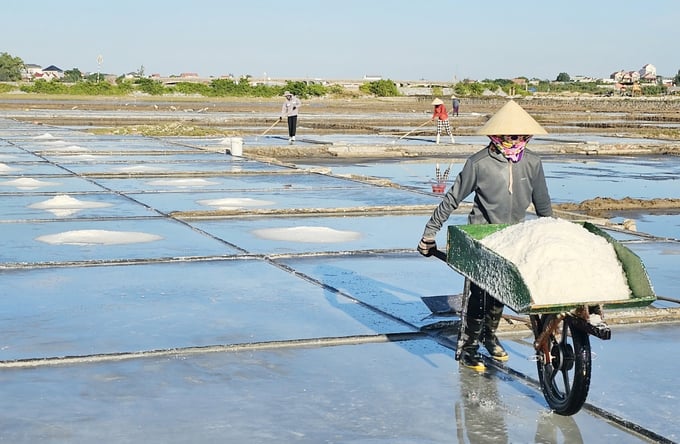
Salt farmers work hard in the salt fields under the scorching sun. Photo: T. Phung.
“The salt industry is not as bad as before,” said Thanh. Prices vary from year to year, but the profit from labor is still the main source of income. “If the harvest is good, my family’s income from the salt fields is 150-160 million VND. This year, the price of salt is low, so the income has decreased to about 120-130 million VND,” said Thanh. According to Thanh, salt-making households still have 6-7 months of free time to do other jobs, and they also work in rice fields, raise livestock, etc., so everyone’s family’s economy is stable.
Establishing cooperatives to support salt farmers
In recent years, during the salt season, the long hot weather has been favorable for salt farmers. Salt in the fields is more productive and of better quality. This year, Quang Phu salt farmers have produced and sold more than 500,000 tons of salt, earning about 8 billion VND.
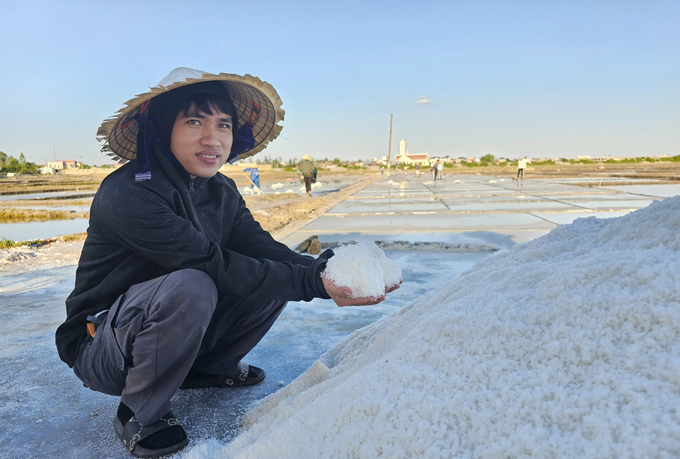
Smiles on a sunny day on the white salt fields. Photo: T. Phung.
Quang Phu salt fields have been planned with a system of horizontal and vertical concrete roads convenient for traveling and transporting salt for consumption. Each salt field has a system of small canals leading to seawater that has been spread out in the sun, convenient for people to bring water to the pond.
According to Mr. Tuong Van Giai, Vice Chairman of Quang Phu Commune People's Committee, there are still some areas in the salt fields that have not been put into use. The local government is mobilizing people to invest in using all the areas to increase income and stabilize their lives.
With the aim of creating a stable output for salt farmers, Quang Phu commune established Quang Phu Salt Cooperative to link production and processing of salt grains with partners in need. Thereby, the cooperative has built factories, purchased salt for people in the fields... creating conditions for the development of Quang Phu salt industry.
Mr. Le Van Thuong, representative of Quang Phu Salt Cooperative, said that initially, the operation will face many difficulties, but when the people contribute their efforts and invest capital to build warehouses and on-site processing factories, it will create a driving force for the development of Quang Phu salt industry.
Source: https://nongsanviet.nongnghiep.vn/diem-dan-ho-hoi-giua-nhung-ngay-nang-nong-d413643.html



![[Photo] Ho Chi Minh City after 50 years of national reunification through buildings and symbols](https://vstatic.vietnam.vn/vietnam/resource/IMAGE/2025/4/15/a224d0b8e489457f889bdb1eee7fa7b4)
![[Photo] Air Force actively practices for the April 30th celebration](https://vstatic.vietnam.vn/vietnam/resource/IMAGE/2025/4/15/16fdec3e42734691954b853c00a7ce01)
![[Photo] Welcoming ceremony for Prime Minister of the Federal Democratic Republic of Ethiopia Abiy Ahmed Ali and his wife](https://vstatic.vietnam.vn/vietnam/resource/IMAGE/2025/4/15/77c08dcbe52c42e2ac01c322fe86e78b)
![[Photo] General Secretary To Lam meets with veteran revolutionary cadres, meritorious people, and exemplary policy families](https://vstatic.vietnam.vn/vietnam/resource/IMAGE/2025/4/15/7363ba75eb3c4a9e8241b65163176f63)
![[Photo] National Assembly Chairman Tran Thanh Man attends the summary of the organization of the Conference of the Executive Committee of the Francophone Parliamentary Union](https://vstatic.vietnam.vn/vietnam/resource/IMAGE/2025/4/15/fe022fef73d0431ab6cfc1570af598ac)


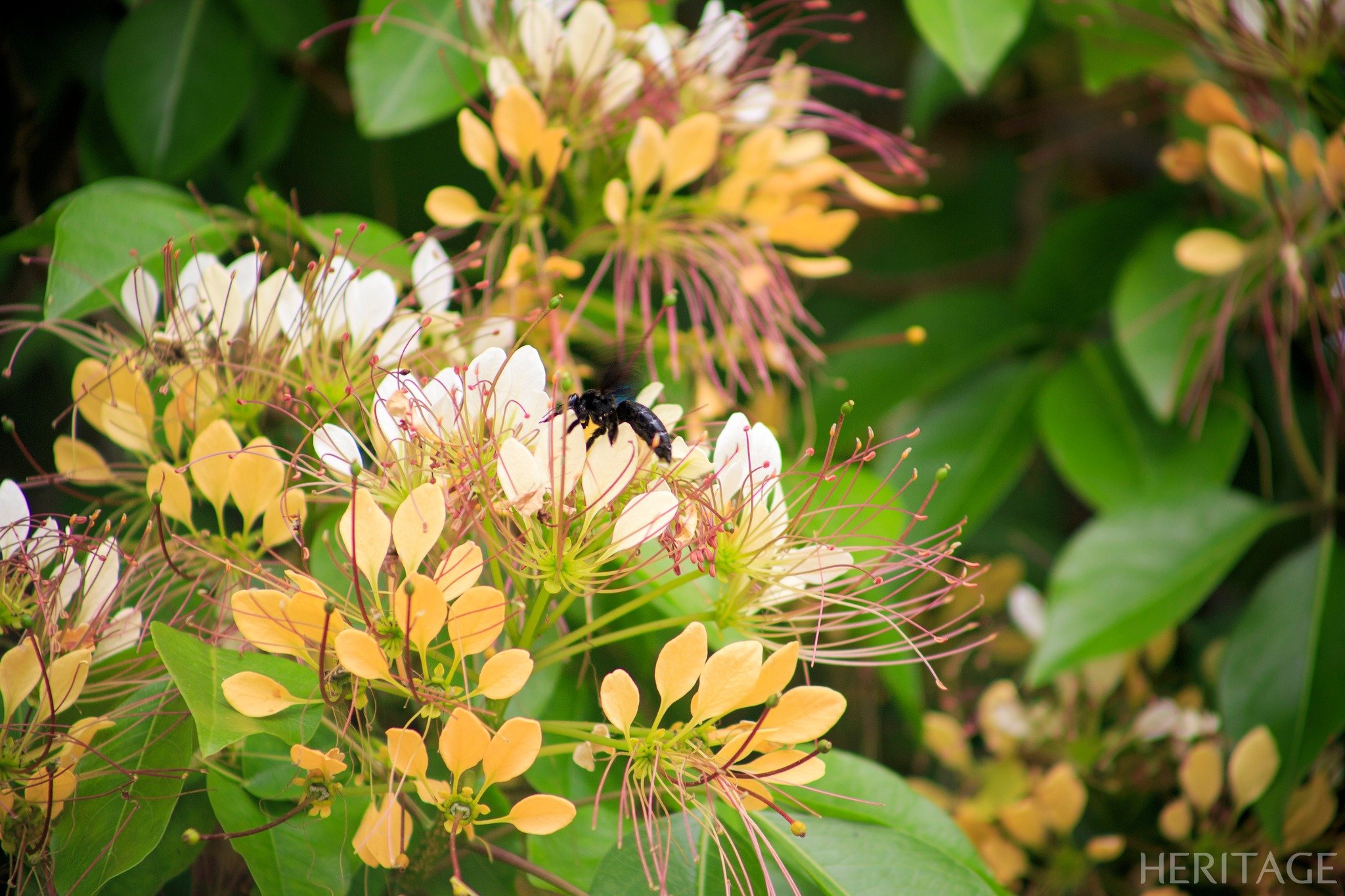
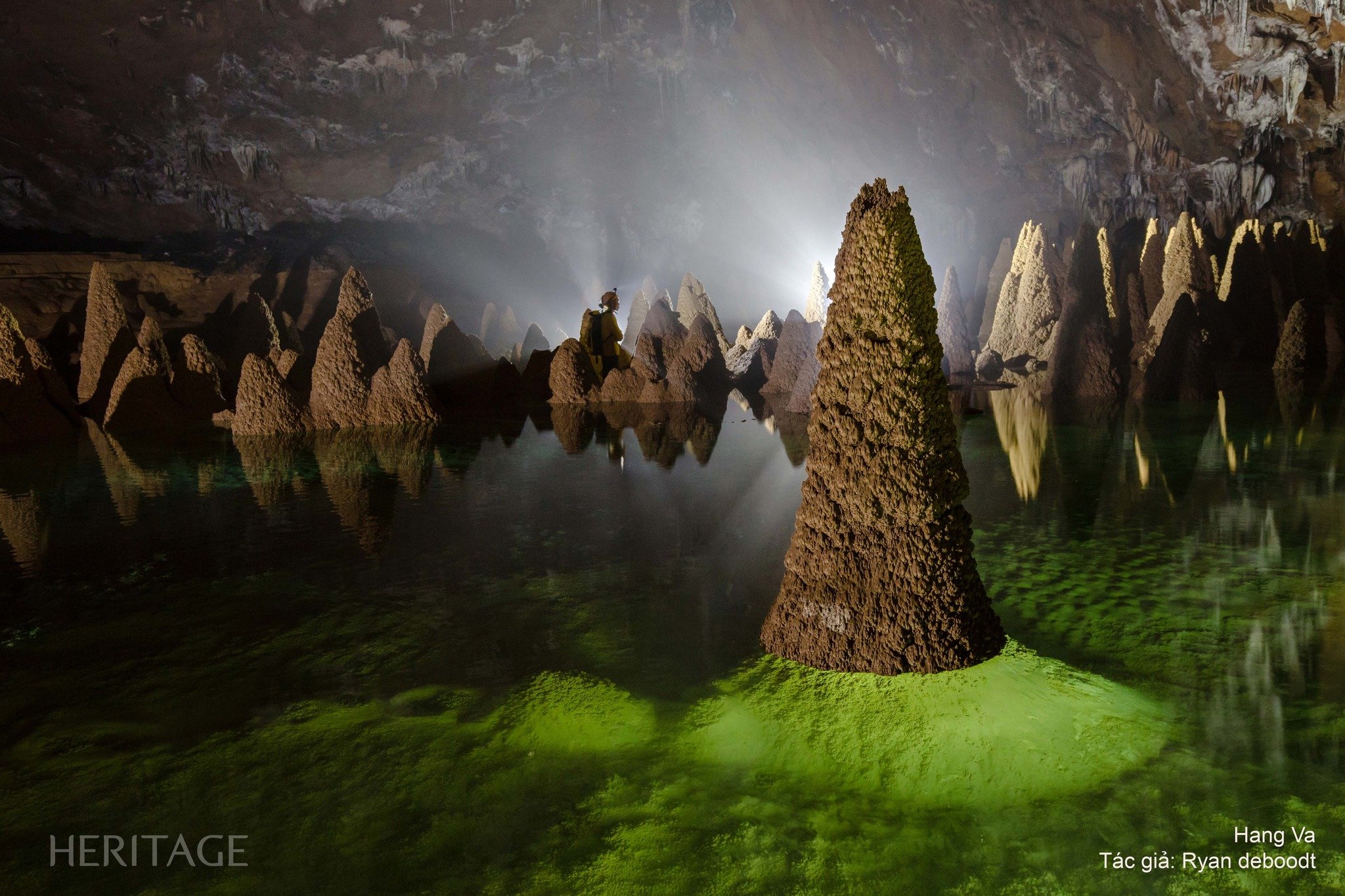

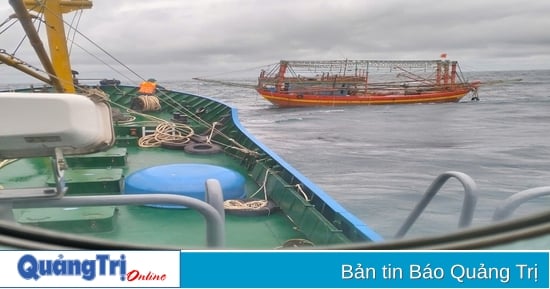




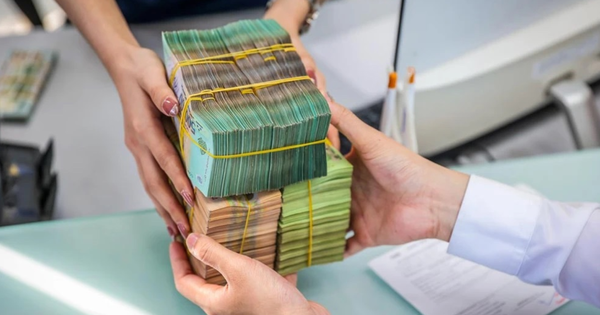
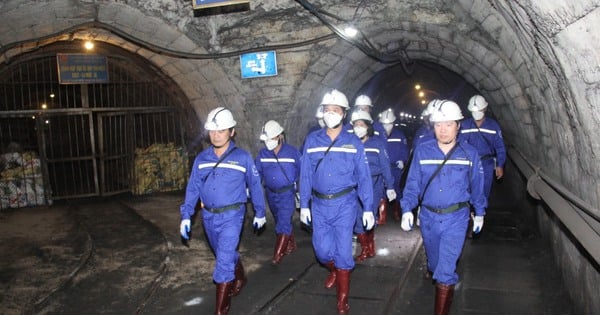


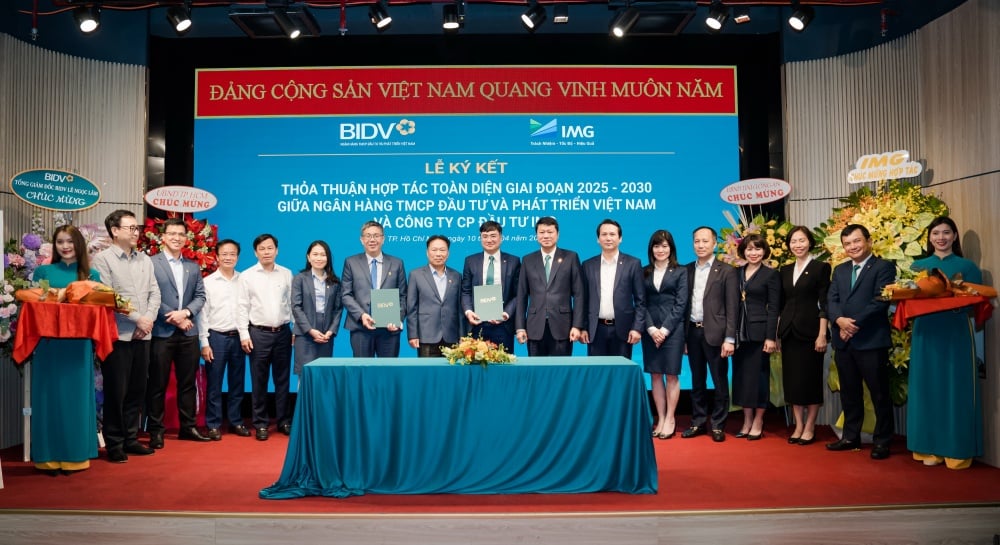




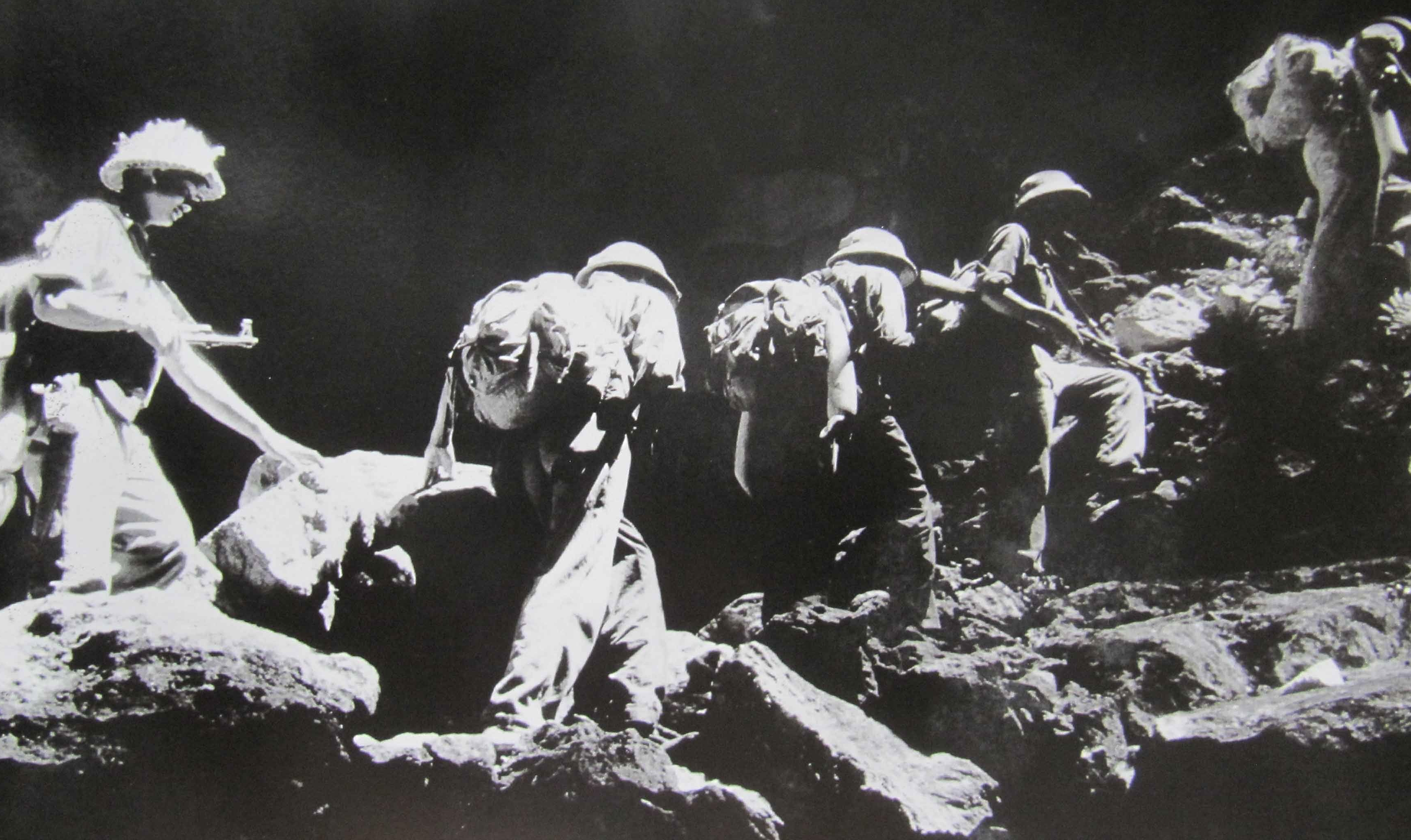
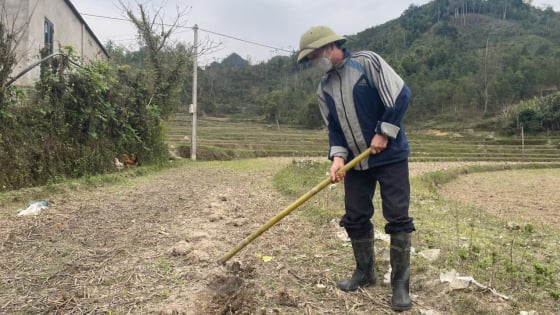
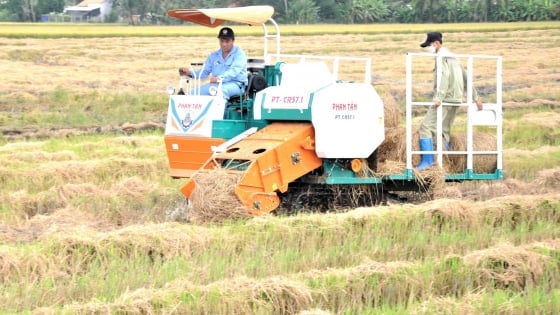

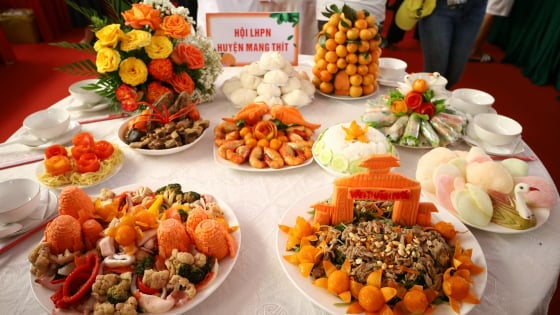
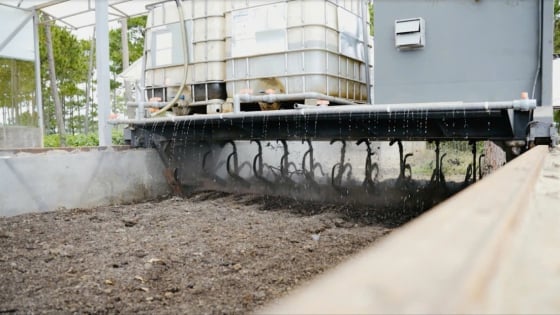
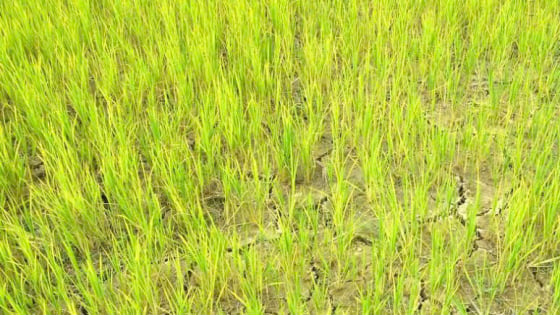






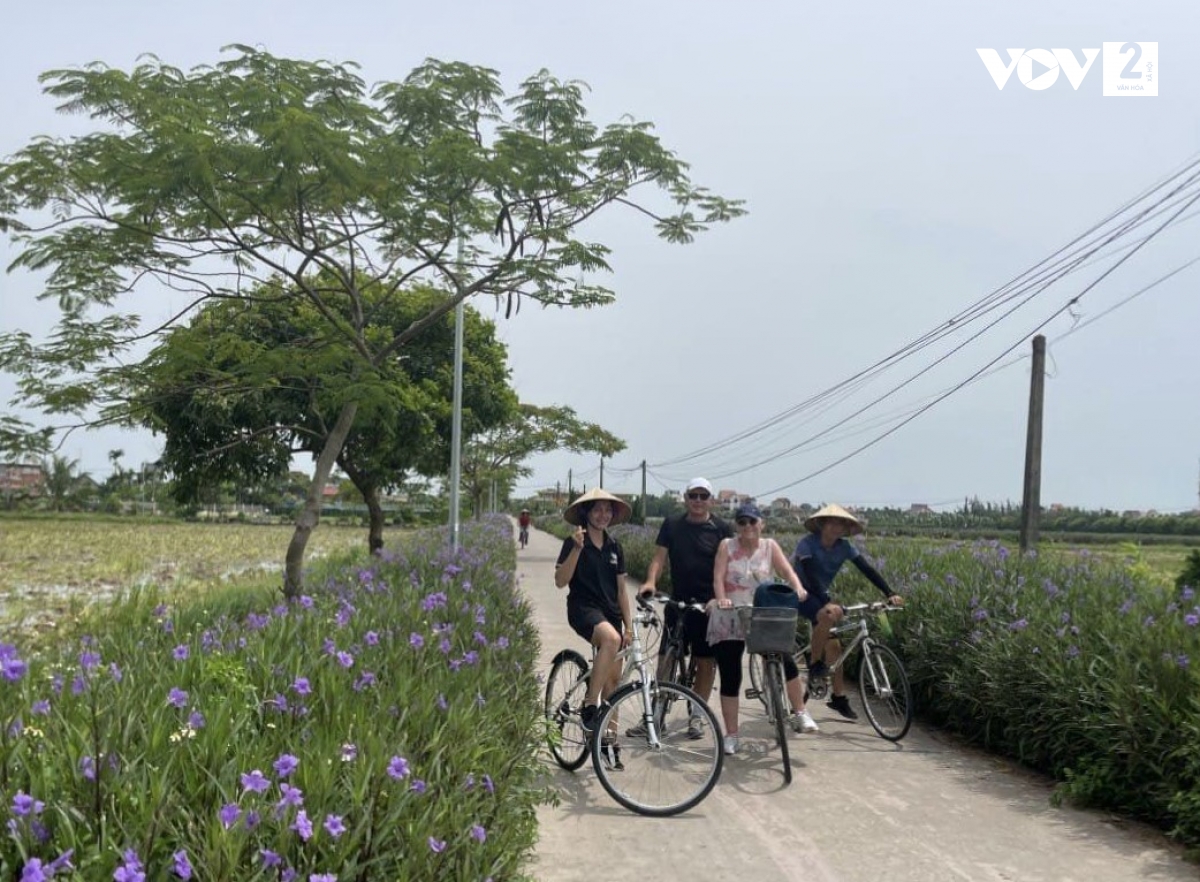

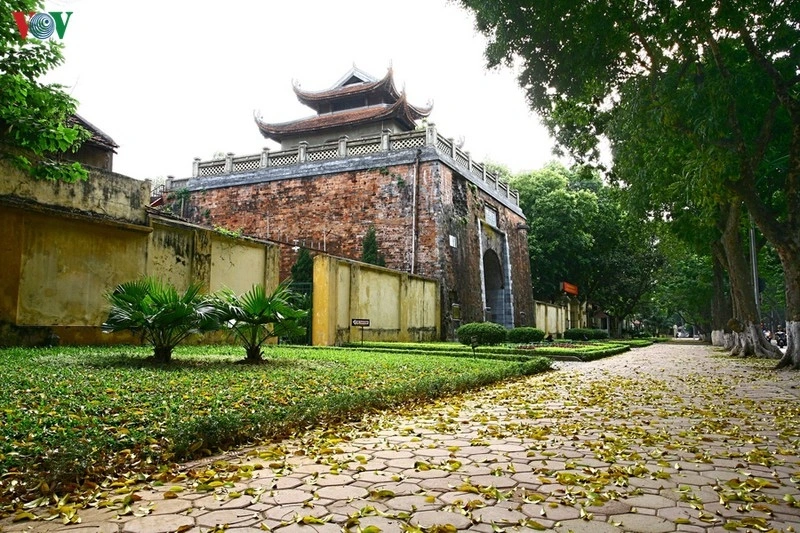























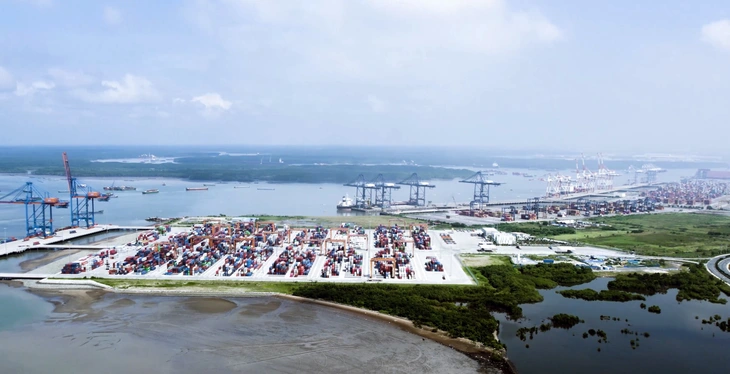





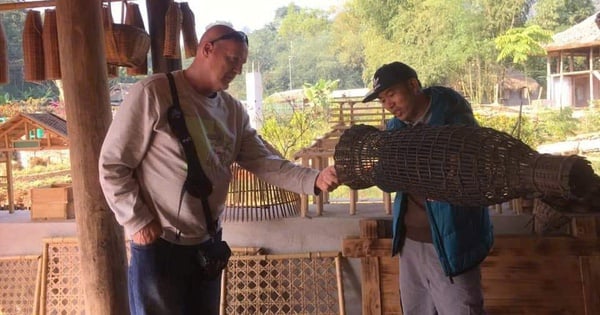

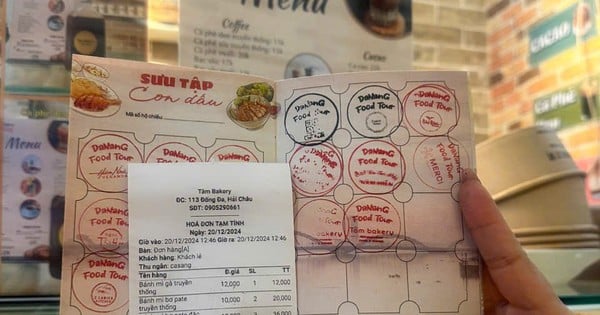












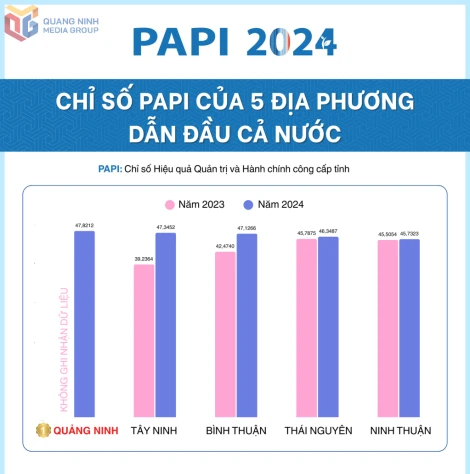


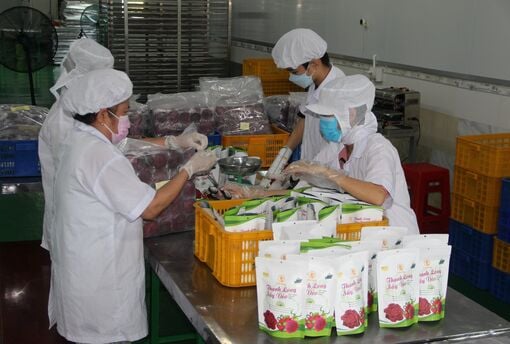




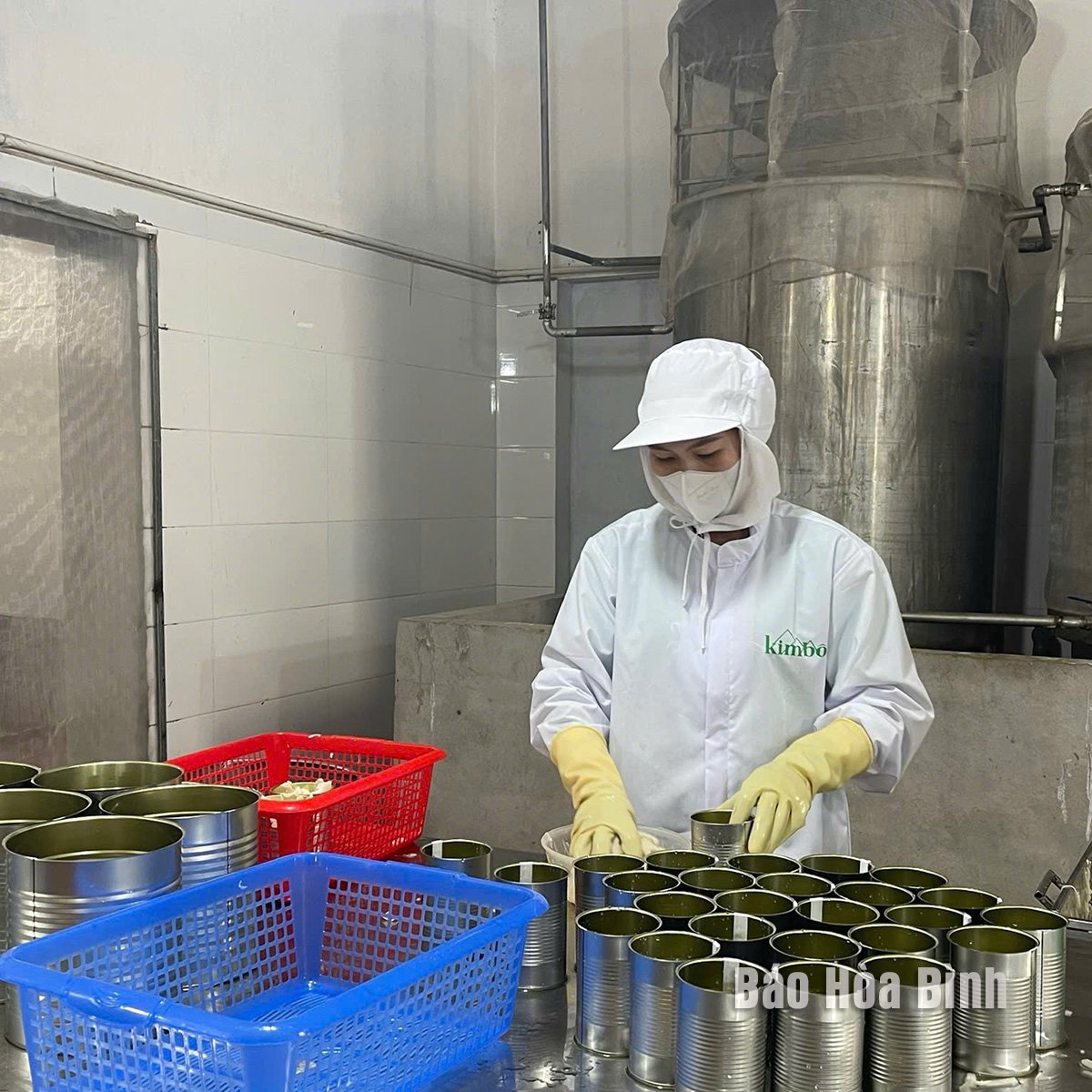

Comment (0)